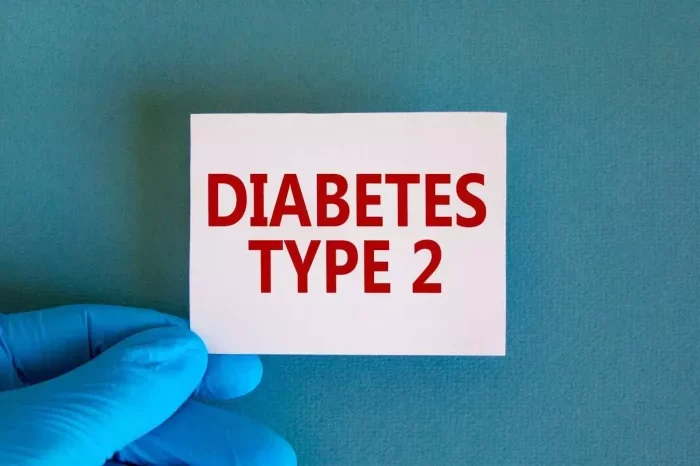At the University of Chicago Medical Center, a team is always on standby to receive and process a deceased donor’s pancreas into isolated islets, which are then infused into a patient with type 1 diabetes. The results of these allogeneic pancreatic islet transplants have been remarkable, with some patients remaining insulin-free for over a decade.
“People who were small children when they developed diabetes and had no idea what life was like without diabetes are overjoyed and having their minds blown that they can stop taking insulin,” said Piotr Witkowski, MD, PhD, professor of surgery and director of the Pancreatic and Islet Transplant Program at the University of Chicago Medicine.
Despite these successes, for the approximately 2 million patients with type 1 diabetes in the U.S., this seemingly accessible treatment is rarely used. Unlike their counterparts with type 2 diabetes, who have benefited from drugs like semaglutide (Ozempic) and tirzepatide (Mounjaro), type 1 diabetes patients remain uncured and dependent on lifelong insulin administration.
Are Islet Transplants a Drug?
In the late 1980s and early 1990s, researchers at the University of Alberta developed allogeneic pancreatic islet transplantation from deceased donors, published in the New England Journal of Medicine in 2000. The process involves cutting a donor pancreas into small pieces, dissociating it into cell clusters, centrifuging to isolate the cells, and preparing them for injection. These islet clusters revascularize the portal vein in the recipient.
From 2000 to 2014, clinical trials in the U.S. demonstrated that deceased donor-derived islet transplantation is safe and effective. However, the FDA’s stance has been that allogeneic pancreatic islet transplants require an accepted Biologics Licence Application (BLA) for approval.
Witkowski and others have suggested that the United Network for Organ Sharing, the Organ Procurement and Transplantation Network, and the Health Resources and Services Administration should oversee a regulatory pathway for human islets similar to that for other human organs in the U.S. However, the FDA has resisted, arguing over whether the pancreatic islets from deceased donors should be classified as organs or manufacturable drugs.
Witkowski disagrees, along with other experts like Rita Bottino, PhD, director of Islet Programs at Imagine Pharma. They argue that pancreatic islets share many characteristics with transplanted organs, such as their natural existence in the human body and their integration into the recipient’s vasculature.
“If you culture single pancreatic beta islet cells alone, they do not even produce good insulin,” Bottino explained. “They must work in tandem with other cells to form a regulatory network. We take these micro-organs and give them to a patient, so we do not actually manufacture anything. They are distinct from drug entities such as vaccines, pills, and chemicals. They are micro-organs.”
Islets from deceased donors behave similarly to other transplanted organs, as they cannot withstand freezing, must be kept at room temperature for a short period, and cannot be stored in commercial organ banks. They require a potency certificate and can only be assessed for effectiveness post-transplantation, based on clinical outcomes. As such, organ transplant programs—not manufacturers—are responsible for the success of islet transplants. Furthermore, because human islets are inherently varied, they cannot be standardized like medications.
“Since 2014, we have been in limbo because we have the therapy that we can use, which is not approved as a drug by the FDA,” said Witkowski. “[Allogeneic pancreatic islet transplants are] working and insurance wants to pay, but they can’t for an unapproved drug.”
Next-Generation Type 1 Diabetes Therapies
Witkowski is among the last in the U.S. still performing islet transplants for type 1 diabetes. He has secured some funding to move towards a BLA, allowing him to perform about 20 procedures per year. Despite this, the development of therapies for type 1 diabetes is far from dead—it is actually beginning to blossom.
Last year, CellTrans finally broke through the FDA’s requirements for allogeneic pancreatic islet cellular therapy, receiving approval for Lantidra™ for type 1 diabetes. However, Lantidra has faced challenges. Its islet beta cells, extracted from donated pancreas tissue, are transplanted into the livers of adult patients who experience dramatic blood sugar swings despite intensive insulin regimens. In clinical studies of 30 participants, 21 did not require additional insulin for at least a year, with 11 remaining insulin-free for over five years. However, Lantidra is still unavailable to patients one year after its BLA approval.
A different approach is to bypass human donors and transplantation altogether in favor of a more tried-and-true cellular therapy: stem cell-derived, lab-grown islets. This approach has gained traction despite being more costly, intricate, and potentially profitable. Vertex Pharmaceuticals made headlines in October 2021 when it revealed that treatment of type 1 diabetes in one patient, using allogeneic stem cells (VX-880) fully differentiated into insulin-producing islet cells, had been successful.
“Vertex has effectively cracked the code on making fully differentiated islet-producing cells on-demand, which have demonstrated efficacy in early clinical results and can be scaled up to meet demand,” a Vertex spokesperson told Inside Precision Medicine.
However, the initial promise was tempered when the FDA placed a clinical hold on the Phase I/II VX-880 study in May 2022 after two patient deaths. The FDA lifted the pause in July 2022 after determining that the deaths were unrelated to the treatment.
Suppress Graft Rejection or Immunoprotect Islets
Regardless of the allogeneic approach—whether from deceased patients or stem cells—the problem of graft rejection remains. Two main strategies have emerged: immunoprotective encapsulation and immunosuppression.
Vertex’s VX264 protects its fully differentiated pancreatic islet cells from the immune system using a capsule-like device that is surgically implanted into the body. This immunoprotective device concept, pioneered by Viacyte, has been explored by several companies, including Sernova, which is developing an immune-protected “Cell Pouch System” to treat chronic diseases like type 1 diabetes. One year ago, Sernova presented data showing that the first five patients to complete protocol-defined islet transplants achieved insulin independence for ongoing periods of six to 38 months.
Eledon Pharmaceuticals has taken a more traditional approach by using immunosuppression. The company’s novel immunosuppressant, tegoprubart, disrupts the CD40-CD40L co-stimulatory pathway, a key mechanism in organ rejection. Tegoprubart is currently in a Phase II clinical trial for islet cell transplantation using human cadaveric cells.
“Tegoprubart has potential applications as an adjunct therapy across islet cell transplantation technologies, including cells sourced from pigs (xenotransplantation), manufactured cells both with and without cloaking technologies, and in combination with delivery devices such as encapsulation pouches,” said Eledon CEO David-Alexandre C. Gros, MD. “As such, we believe tegoprubart is the key to fully unlocking the potential of islet cell transplantation as a functional cure for type 1 diabetes.”
A Scarcity of Genome-Editing Angles
Gene-editing-based type 1 diabetes therapies, whether edited autologous or in vivo, have generated little hype. Most research is still in the preclinical stage, with some testing in mice.
The biggest development came in 2022 from the Garvan Institute of Medical Research in Australia, which announced that its in vivo gene therapy program using adeno-associated viruses (AAVs) had received funding and approval to begin clinical trials. The treatment, GARV-AAV2-A20, is based on work by Shane Grey, PhD, who identified a key protein, A20, involved in inflammation and autoimmune disorders. This protein could be used to genetically engineer insulin-producing islet cells, slowing or stopping immune system damage.
In early 2024, Vertex parted ways with CRISPR Therapeutics on a gene-edited, stem cell-derived cell therapy for type 1 diabetes. The next-generation prospect, VCTX210, began clinical trials in 2022. CRISPR, now fully owning the assets, continues running a Phase I trial of the next-generation candidate, CTX211, expected to complete in 2025.
Vertex continues to pursue a hypoimmune cell program, using CRISPR-Cas9 to gene edit stem cell-derived, fully differentiated islets to cloak them from the immune system. This program is still in the research stage. When asked about gene therapy approaches, Vertex’s spokesperson stated, “Vertex is currently developing cell therapies for type 1 diabetes.”
The search for the right gene therapies for type 1 diabetes continues, focusing on reprogramming cells to make insulin without triggering an immune response. However, the next approval in the type 1 diabetes space will likely not come from this area anytime soon.
Related topics:
Breakthrough in Diabetes Treatment: ‘Smart’ Insulin That Adapts to Blood Sugar Levels
Top Cookbooks for Managing Diabetes: Delicious Recipes for Optimal Glucose Control
War’s Ripple Effect: Conflict in Ukraine May Surge Global Diabetes Cases



























